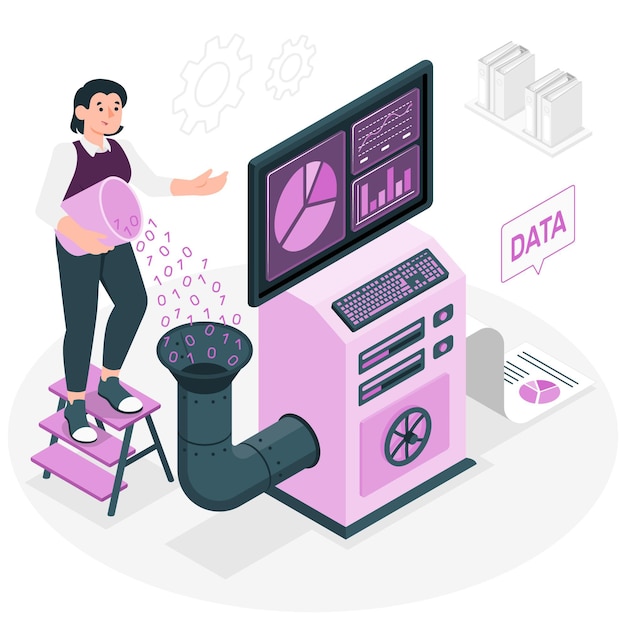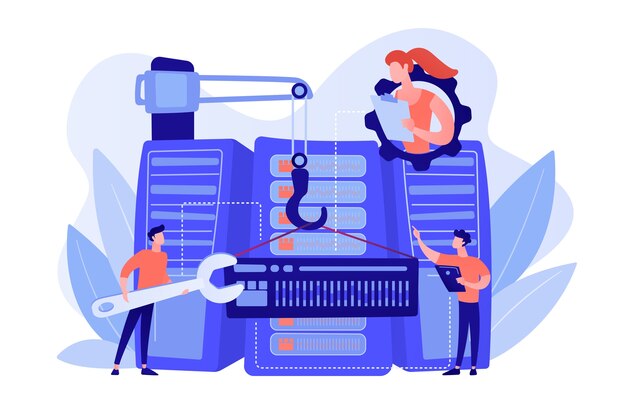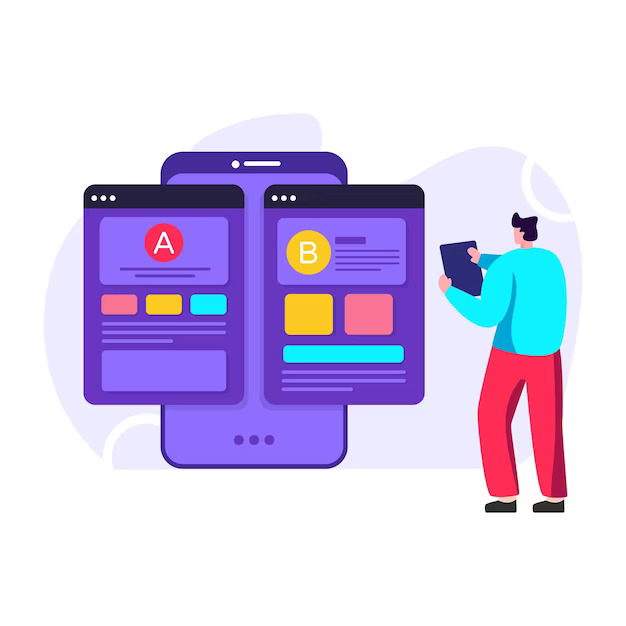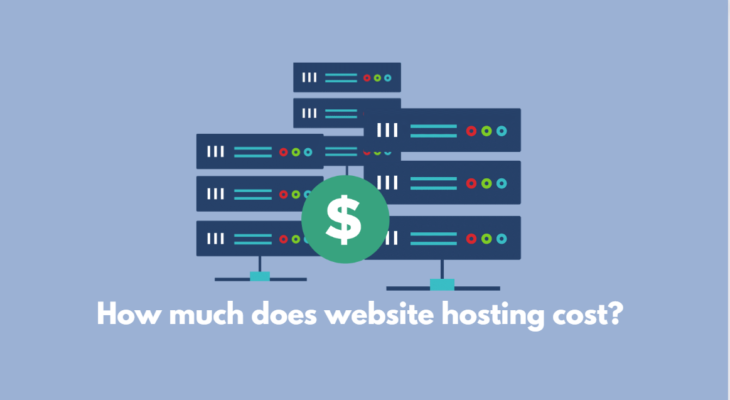Web app vs Website this debate plays a huge role in today’s digital era, because businesses and individuals have a variety of options to establish an online presence.
Two popular choices are web applications (web apps) and websites.
While both share similarities and serve specific purposes, they have distinct characteristics and functionalities.
This article aims to shed light on the key differences between web applications and websites, helping readers make informed decisions about which option suits their needs.
What Is A Web App?

A web app, short for web application, is an interactive software application that operates through a web browser.
Unlike traditional software applications that you can install locally on a device, web applications need hosting on remote servers and accessed through the internet.
This means that users can access and use web applications from any device with a browser and an internet connection.
Web applications provide specific functionalities and services to users.
They can range from simple apps like calculators or to-do lists to complex applications like project management tools or online banking systems.
Web applications can handle tasks such as data processing, user authentication, content management, online transactions, real-time collaboration, and more.
One of the key advantages of web applications is their platform independence.
Since they run within a browser, they can be accessed from various operating systems (such as Windows, macOS, or Linux) and devices (including desktop computers, laptops, tablets, and smartphones).
This makes web apps highly accessible and eliminates the need for users to install and update software on their devices.
Web apps are typically developed using a combination of front-end and back-end technologies.
Front-end technologies like HTML, CSS, and JavaScript are used to create the user interface and handle client-side interactions.
Back-end technologies like programming languages (such as Python, Ruby, or Java), databases, and server-side frameworks are employed to process data, handle business logic, and interact with external systems.
Overall, web apps offer a flexible and scalable approach to delivering software applications over the internet.
They enable businesses and individuals to provide interactive services, streamline processes, and reach a wider audience without the need for device-specific software installations.
What is a Website?

A website is a collection of interconnected web pages accessed through a web browser.
It is a digital representation of a person, organization, business, or topic on the internet.
Websites share information, promote products or services, provide resources, or establish an online presence.
Websites can vary in size and complexity, ranging from simple single-page sites to large, multi-page platforms with various sections and functionalities.
They are typically texts, images, multimedia content (such as videos or audio), and hyperlinks that connect different pages within the site or link to external sources.
Informational Websites
These websites aim to provide information about a specific topic, organization, or individual.
Examples include news websites, educational websites, personal blogs, or company websites that showcase their products and services.
E-commerce Websites
E-commerce websites are designed to facilitate online shopping.
They typically include product catalogs, shopping carts, payment gateways, and order processing systems.
Examples include online retail stores like Amazon or fashion brands with online shopping platforms.
Blogging Platforms
These websites focus on content creation and publishing.
They allow individuals or groups to share articles, stories, opinions, or other forms of written or multimedia content.
Popular blogging platforms include WordPress, Blogger, and Medium.
Portfolio Websites
Portfolio websites are commonly used by artists, designers, photographers, or creative professionals to showcase their work and attract potential clients or employers.
They often include galleries, project descriptions, contact information, and testimonials.
Community or Social Networking Websites
These websites provide platforms for people to connect, communicate, and share content with others.
Social media platforms like Facebook, Twitter, and Instagram fall into this category, as well as specialized community websites focused on specific interests or hobbies.
Difference Between Websites and Web Applications
Interactivity

Web apps provide a high level of interactivity and user engagement.
They go beyond static content delivery and allow users to actively interact with the application.
Web apps often include features such as input forms, search functionalities, user accounts, data submission, real-time updates, and interactive elements like drag-and-drop or sliders.
On the other hand, websites typically offer more limited interactivity.
While they may include basic forms for contact or subscription purposes, comment sections, or search functionality, their primary focus is on presenting information rather than facilitating complex user interactions.
Complexity

Web apps tend to be more complex in terms of development and functionality compared to websites.
They require advanced programming skills and a deeper understanding of web development concepts.
Web apps often involve back-end components, databases, server-side logic, and complex business workflows.
Developing a web app usually requires a combination of programming languages, frameworks, and databases.
Popular web app frameworks like React, Angular, or Django offer pre-built components, tools, and libraries that facilitate the development process and handle complex functionalities.
Websites, on the other hand, are generally simpler in terms of complexity.
They can be built using HTML, CSS, and JavaScript, with additional functionalities provided by content management systems (CMS) or plugins.
Dynamic Elements

While websites can have dynamic elements, such as content updates or interactive features, their overall complexity is often lower compared to web apps.
The complexity of web apps arises from their ability to handle complex business processes, data manipulation, user authentication, real-time updates, and extensive user interactions.
Web apps can offer functionalities like document editing, project management, collaborative features, complex data processing, or integration with external systems.
In summary, web apps offer a higher level of interactivity and complexity compared to websites.
They enable users to perform tasks, manipulate data, collaborate with others, and have personalized experiences.
Websites, on the other hand, focus more on delivering information and providing basic interactivity, with less emphasis on complex functionality and user engagement.
Functionality

Functionality is another important aspect that distinguishes web apps from websites.
Websites primarily focus on delivering information, promoting products or services, or sharing content with visitors.
The main goal is to provide relevant and engaging content to the audience.
Websites often include features such as:
Information Display

Websites present information in a structured manner, providing details about a business, organization, individual, or topic of interest.
This may include text, images, videos, infographics, or other multimedia elements.
Navigation

Websites have navigation menus or links that help users explore different pages and sections of the site.
This allows visitors to find specific information or access various parts of the website easily.
Forms and Contact

Websites may include contact forms, subscription forms, or other input fields that allow visitors to interact and communicate with the website owner.
This facilitates inquiries, feedback, or newsletter subscriptions.
Search Functionality

Many websites provide search features that enable users to search for specific content within the site.
This helps visitors find relevant information quickly.
Multimedia Integration

Websites often incorporate multimedia elements like images, videos, audio clips, or slideshows to enhance the content presentation and engage visitors.
Web apps, on the other hand, offer more advanced and interactive functionalities beyond information display.
They are task-oriented and provide services or perform specific functions for users.
Some common web app functionalities include:
User Authentication

Web apps can handle user registration, login, and authentication processes to provide personalized experiences and secure access to specific features or data.
Data Processing

Web apps can manipulate and process data entered by users, perform calculations, generate reports, or apply complex algorithms to provide useful outputs or insights.
Real-time Updates

Web apps can offer real-time updates to users, allowing them to see changes or updates instantaneously without refreshing the page.
This is particularly useful for collaborative platforms or applications that involve live data.
Online Transactions

Web apps often facilitate online transactions, allowing users to make purchases, manage payments, or handle financial transactions securely.
Task Management and Collaboration

Web apps can support task management, project collaboration, or team coordination by providing features such as task assignment, progress tracking, file sharing, and communication tools.
Customization and Personalization

Web apps can offer customizable interfaces, user preferences, or personalized settings to enhance the user experience and tailor the app to individual needs.
In summary, while websites focus on delivering information and engaging visitors, web apps provide more advanced and interactive functionalities that enable users to perform tasks, process data, collaborate, and personalize their experiences.
Web apps provide specific services and often require user authentication, real-time updates, data processing, and complex functionality beyond content presentation.
Deployment

Websites are typically on web servers.
To make a website accessible, it needs to be hosted on a server and associated with a domain name.
The deployment process involves uploading website files to a hosting provider’s server, configuring domain settings, and ensuring the website is live and accessible on the internet.
Website deployment often requires:
Domain Registration

A domain name is the unique address that users type into their browsers to access a website.
Website owners need to register a domain name and configure it to point to the hosting server where the website is.
Maintenance

Websites require regular maintenance to ensure they remain functional and up to date.
This includes updating content, applying security patches, monitoring performance, and addressing any technical issues that arise.
Web apps are also on web servers, similar to websites.
However, depending on the complexity of the web app, additional infrastructure and services may be required.
This can include back-end servers, databases, caching systems, or third-party integrations.
Web app deployment typically involves:
Web Server Hosting

Apps need to be hosted on web servers that can handle the application’s requirements.
This may involve setting up dedicated servers, virtual private servers (VPS), or cloud-based hosting services.
Back-End Infrastructure

Web apps often require a back-end infrastructure to handle server-side logic, process data, and interact with databases.
This may involve setting up application servers, API gateways, load balancers, or caching systems.
Database Management

Web apps that store and use data require a database management system (DBMS).
This includes setting up and configuring databases such as MySQL, PostgreSQL, MongoDB, or others.
Maintenance

Similar to websites, web apps require ongoing maintenance to ensure their functionality, security, and performance.
Regular updates, bug fixes, and monitoring are necessary to keep the web app running smoothly.
Accessibility

Websites are widely accessible by users across different platforms and devices.
Users can access websites using a web browser on desktop computers, laptops, tablets, or smartphones.
Websites are platform-independent, meaning they can be accessed on various operating systems such as Windows, macOS, or Linux.
Websites are also compatible with different web browsers, including Chrome, Firefox, Safari, and Edge.
This broad compatibility ensures that websites can reach a wide audience regardless of their preferred browser.
Accessibility is an essential aspect of websites, as they can be accessed by anyone with an internet connection.
This allows users from different locations and devices to visit and interact with the website’s content, making it a valuable tool for reaching a broad user base.
Accessibility of Web Apps
Web apps, like websites, are accessible through web browsers.
Users can access web apps from different devices, including desktop computers, laptops, tablets, or smartphones, as long as they have an internet connection and a compatible browser.
Web apps offer the advantage of being platform-independent, allowing users to access and interact with the app’s functionalities regardless of their operating system.
This flexibility makes web apps accessible to a broad range of users, irrespective of the device or platform they are using.
Conclusion
In summary, both websites and web apps require deployment on web servers, but the complexity of web app deployment may involve additional infrastructure.
Both websites and web apps are accessible through web browsers, making them widely available to users across different devices and platforms.
Web apps offer a higher level of interactivity and user engagement, providing features like real-time updates, user authentication, data processing, and task management.
They perform specific tasks or provide services, often requiring more complex development and back-end infrastructure.
On the other hand, websites primarily focus on delivering information, promoting products or services, and sharing content with visitors.
Understanding the distinctions between these two forms of online presence enables developers and businesses to make informed decisions and create digital experiences that effectively meet the needs of their target audience.
If you liked this article, consider reading another about Website Launch Checklist here.
FAQ
A web application, also known as a web app, is a software application that runs on a web server and functions through a web browser over the internet.
It provides interactive functionality, data processing, and user engagement, allowing users to perform tasks, collaborate, and access services online.
Web applications offer several advantages over desktop applications.
They are platform-independent, accessible from any device with a web browser and internet connection.
Additionally, web apps can be easily scaled and updated centrally, ensuring a consistent user experience.



